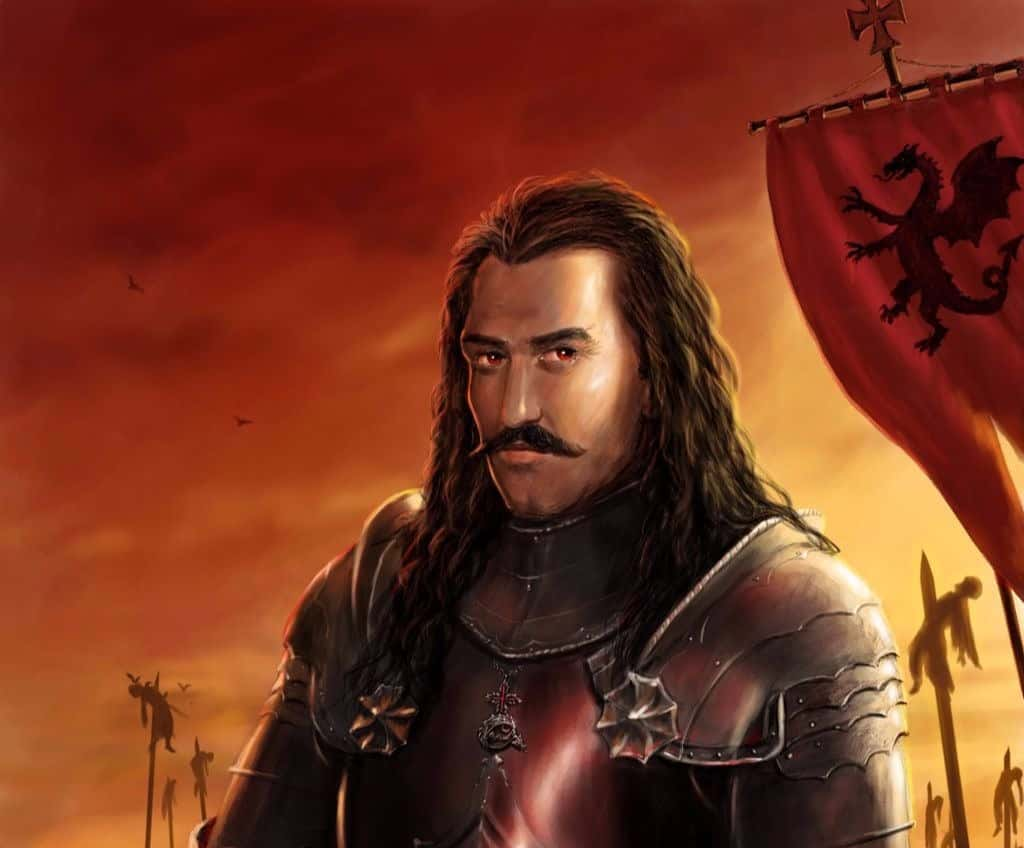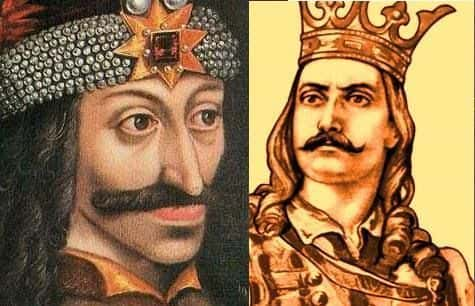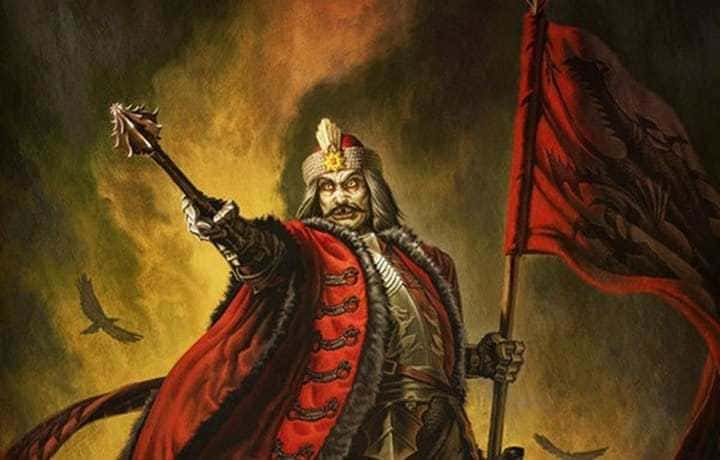Disclaimer: At Factinate, we always strive for historical accuracy. However, sometimes it's hard to get it right, and this is one of those times. Vlad III's life is surrounded by legend, and historians have struggled to either verify or discredit many of the stories about him. Where historians disagree, or when commonly told stories lack hard, indisputable evidence, we've tried to capture this by using words like "allegedly" or "supposedly."
Disclaimer: Vlad III did some brutal stuff, but it's important to understand the context. In Romania, Vlad III is largely considered considered a national hero who fought tirelessly against the Ottoman Empire, doing what it took to keep his people safe and free.
"Though many Westerners are baffled that a man whose political and military career was as steeped in blood as was that of Vlad Dracula, the fact remains that for many Romanians he is an icon of heroism and national pride. It is this duality that is part of his appeal." —Elizabeth Miller, Dracula: Sense & Nonsense
Vlad III, known as Vlad Țepeș, Vlad Dracula, or Vlad the Impaler, was the prince of Wallachia (modern day Romania) three times between 1448 and his death in 1476 or 1477. His cruel methods of punishing his enemies gained him infamy in 15th century Europe all the way to today, but he still remains a folk hero in some parts of the world, particularly for his role in combatting the Ottoman invasion. Below are 30 bloodthirsty facts about the notorious ruler.
27. What’s in a Name
The name Dracul originally meant "dragon." Vlad III's father took the name when he joined the Order of the Dragon, a Christian group opposed to the Ottomon domination of Europe. Vlad III took the name Dracula, meaning "son of the dragon."
 Pinterest
Pinterest
26. That’s Sir Impaler
Dracula was given the nickname “Tepes,” which means "impaler" in Romanian. He was also known by the Turks as Kazikli Bey which means "Sir Impaler."
 Pinterest
Pinterest
25. Hit and Run
One of Dracula’s favorite military tactics was to ambush the enemy with lightning attacks on horseback, impale enemy soldiers, and then get the heck out of dodge as fast as possible. He apparently did this to compensate for his relatively small army (compared to the Turks) and limited resources.
24. A Morbid Sense of Humor
Perhaps unsurprisingly, Dracula was known for his morbid sense of humor. After being impaled, his victims would often twitch around as they died. According to one account, Vlad once casually said, “Oh, what great gracefulness they exhibit!” In another story, when a soldier disrespectfully covered his nose because of the stench of the rotting corpses, Dracula impaled the unfortunate man too.
23. Prisoner of Peace
In 1442, Dracula and his younger brother Radu were given over to Sultan Murad II, then the ruler of the Ottoman empire, to ensure their father’s loyalty to the empire during the war with Hungary. The boys were tutored in science, arts, and philosophy, and were allegedly taught the arts of war.
 Pinterest
Pinterest
22. Poorly Adjusted
While Dracula’s brother Radu adjusted easily to life among the Ottomans, Vlad was often whipped by his captors for being stubborn and rude. That period had a tremendous influence on Vlad, and led to his hatred of the Ottoman Turks, his brother, and the Ottoman Prince. Historians also believe that this is where he learned his torture tactics.
21. Cruel and Cunning
Vlad’s torturous ways weren’t simply a means of getting rid of his enemies. According to historians, Vlad engaged in psychological warfare: Impaling was a way of terrorizing and scaring away potential invaders.
Sources: 1, 2, 3, 4, 5, 6, 7, 8, 9, 10, 11, 12, 13, 14, 15
20. Don’t Touch!
Thanks to his murderous ways, Dracula had complete control over his people. To demonstrate how much they feared him, the story goes that he allegedly had a golden cup crafted and placed in the town square. The rule was that anybody could drink out of it, but it could never leave the square. An estimated 60,000 people (many of them quite poor) lived in the town at the time, but during his entire reign, the cup was never touched.
 Hollywood movie costumes and props
Hollywood movie costumes and props
19. Beating Them to It
Under constant threat from his Turkish neighbors, Vlad sent an army to push them out of his land. Eventually, they forced him into a retreat, but he did not go quietly. Vlad burnt down his own villages along the way so that the Turks would have nowhere to rest, and even went so far as to poison his own wells and murder his villagers so the Turkish army wouldn’t get the satisfaction.
18. That's a Lotta Heads
After burning down an Ottoman stronghold in 1461, Dracula allegedly presented nearly 24,000 Turkish and Bulgarian heads to officials.
17. Where Are Your Manners?
According to the 15th century manuscript The Story of a Bloodthirsty Madman Called Dracula of Wallachia, by Michel Beheim, Vlad had a gory dinnertime ritual. He would invite a few people over for dinner at his mansion, give them a feast, and then have them impaled at the dinner table. He would then finish his dinner, dipping his bread into the pooled blood of the victims. As one does.
Note: Historians have been unable to verify the validity of this text.
16. Who’s Your Mommy?
Dracula’s mother's identity is actually unknown. Historians theorize that his mother is either his father's unknown first wife or a relative of Alexander I of Moldavia, possibly Eupraxia of Moldavia.
 Youtube
Youtube
15. Concerned with Morality
As ruler of Wallachia, Vlad imposed his own moral code on the country. He was especially concerned with chastity. Many adulterous women, women who lost their virginity, and unchaste widows allegedly had their sexual organs cut out, or were impaled.
14. Unlucky Mistress
Vlad was held prisoner by the King of Hungary from approximately 1462 until 1474, though the exact length of time is still debated by historians. His time spent in captivity wasn't too onerous. While "locked up," he was known for taking mistresses, and one mistress in particular met a particularly unfortunate and gruesome fate: He reportedly cut open her body to disprove her pregnancy.
Sources: 1, 2, 3, 4, 5, 6, 7, 8, 9, 10, 11, 12, 13, 14, 15
13. First Wife
Historians believe that Dracula was married twice in his lifetime. The identity of the first wife is unknown, but she gave birth to his eldest son and heir, Mihnea, and died while Vlad was fighting against the Turks in 1462. According to legend, she threw herself off the tower into the Arges River below the castle to avoid capture by the Turks.
12. A Strategic Trade
Dracula’s second wife was Justina Szilágyi, who was the cousin of Matthias Corvinus, the King of Hungary. She met Dracula during his imprisonment, and he gained his freedom by marrying her. She gave birth to his other two sons, and eventually became Princess of Wallachia when Vlad won the title.
 Crimeandrelativedimensioninspace
Crimeandrelativedimensioninspace
11. Alike in Name Only
Scholars have long connected Vlad Dracula to Bram Stoker’s famous novel Dracula, but beyond the use of the name and a loose connection to Transylvania, there’s little evidence that the character was specifically based on the real Dracula. Nonetheless, by the time Stoker wrote the novel, stories of Vlad's cruelty had pervaded culture.
10. Eradicating Poverty
Poverty was another "concern" of Dracula’s, and oral folk history says he came up with a brutal solution for eliminating the numerous poor, vagabonds, and cripples in the country. One night, he allegedly invited the poor to Tirgoviste for a feast. While they ate and drank into the night, he locked his doors and set the hall on fire. None escaped, and the "problem" was fixed.
9. Kill Them All!
When Dracula was released from prison, he discovered that his father had been betrayed by his people, and buried alive by Hungarian troops. Vlad knew that many men who served his father were involved in his betrayal, but Vlad wasn't able to identify who specifically was responsible. He pulled a classic Vlad move and invited all of his father's servants to a feast. When the feast was finished, legend says Dracula’s soldiers came into the room, barred the door, and impaled every single one of the guests.
Since this was his signature move, why didn't people just not show up? Well, apparently if they refused the invite, they'd be killed on the spot. And you know, maybe this time he wouldn't kill literally everyone.
8. Mass Impaling
It's reported that Dracula once impaled 20,000 people in a single day. In 1462, after fleeing an Ottoman advance, he left a proverbial "Forest of the Impaled" in his wake, mostly made up of prisoners of war. This sounds like a pretty high number, but it does give an idea of just how feared Vlad was.
 Assaultweb
Assaultweb
7. Not a One Trick Murderer
Although Dracula was known primarily for impaling his enemies, this wasn’t the only method he used for punishment. He was also known for blinding, strangulation, cutting off limbs, and scalping. According to one account, Vlad the Impaler once caught a Roma man stealing from him. He boiled the man alive and then forced the other Roma to eat him.
Sources: 1, 2, 3, 4, 5, 6, 7, 8, 9, 10, 11, 12, 13, 14, 15
6. Nailed Them!
Once Dracula paid his final tribute (a kind of loyalty tax) to the Turkish Sultan, the Sultan sent a group of men to meet with Vlad. Dracula insisted that they remove their turbans, but they refused, pleading religious custom. Angered by their refusal, he allegedly detained the men and nailed their turbans to their heads as punishment.
 Youtube
Youtube
5. Creating a Legend
In the 15th century, the rise of the printing press meant that texts could be widely circulated. This also allowed the spread of stories about Vlad’s cruelty and depravity, and they were instrumental in creating his legend.
4. Back at it Again
According to David Carroll, on Easter Day in 1456, Dracula invited the regional nobility to dinner. Following the meal, he had the old and infirm murdered, and marched the rest 50 miles to the dilapidated castle he took as his own. He forced them into hard labor restoring the castle, and those who didn’t die of malnutrition or exhaustion were impaled outside the castle when the restoration was complete. So yeah, a slight variant on his usual schtick. I don't know what to tell you... You don't get the name "Vlad the Impaler" without, like, impaling a ton of people.
3. 100,000 Deaths
It’s estimated that in his lifetime, Vlad the Impaler was responsible for 100,000 deaths, mostly of Turks. This makes him the most brutal enemy the Ottoman empire ever faced.
2. A National Hero
In Romania, Vlad the Impaler is a national hero and is mostly revered; his cruelty is acknowledged, but is seen as necessary at the time to maintain his power and repel his enemies.
1. Head on a Stake
Dracula died in battle while fighting the Turks. His body was reportedly buried at a cemetery at the Snagov Monastery, but his remains were never found. Historian Constantin Rezachevici has suggested that Vlad may be buried in the Comana Monastery, which is near where he was killed.






























